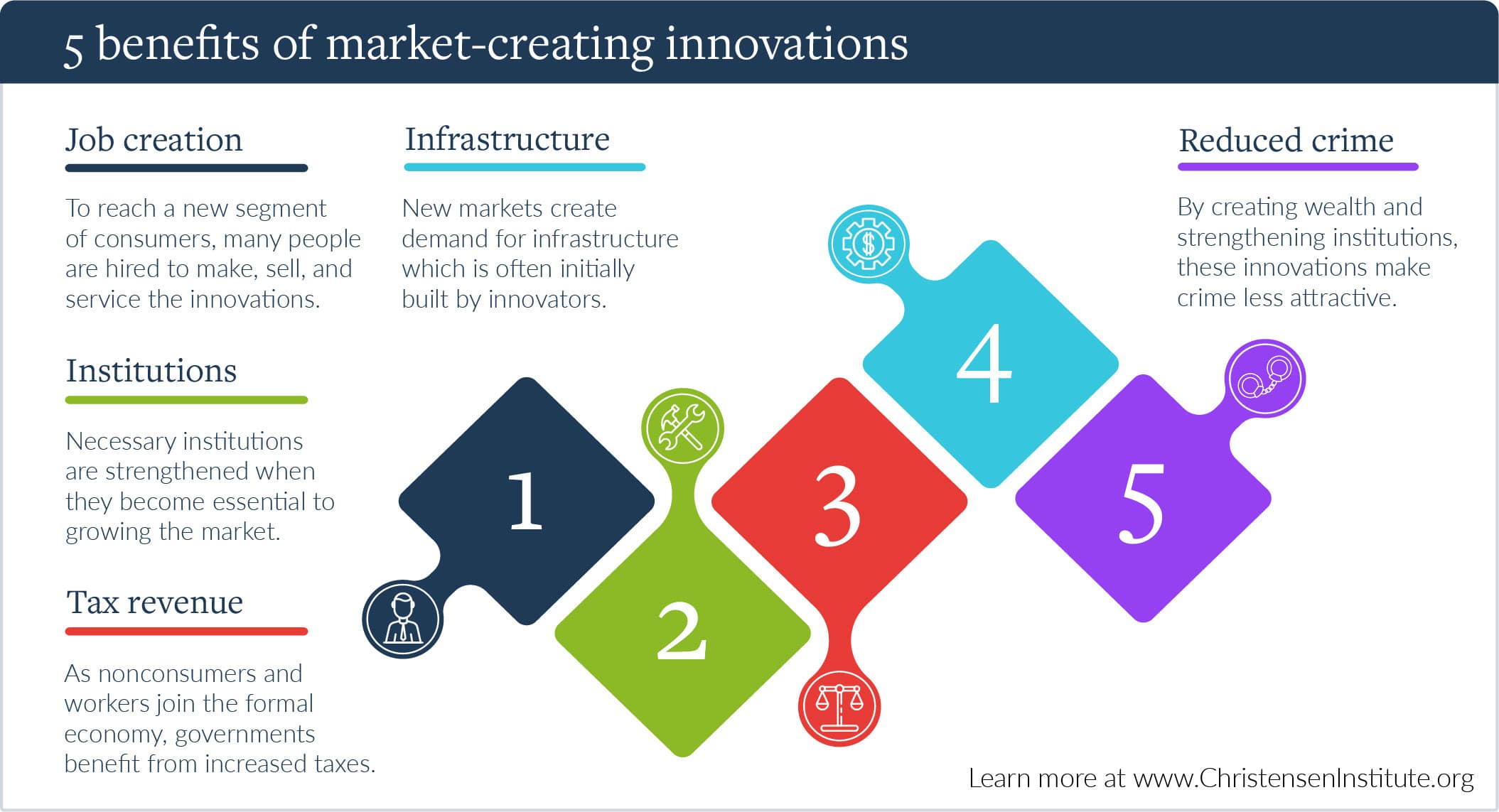Every year, hundreds of billions of dollars are spent to help low- and middle-income countries eradicate extreme poverty. Some progress has certainly been made; not only has the percentage of people living in poverty over the past few decades reduced, but more people across the world are living longer lives.
However, the reality is that true prosperity—the process by which more and more people in a region improve their economic, social, and political well-being—is still out of reach for too many. And, when we dig deeper, we find that the majority of those who have escaped poverty are from a single country—China—which has received little development aid relative to other nations. The number of people living in extreme poverty has actually increased in some regions that receive significant funding for poverty reduction programs, such as sub Saharan Africa. Why are these efforts not yielding the results for which many hope?
Our research suggests prosperity is not generated through the flood of well-intentioned resources from wealthy countries to poor countries. Instead, prosperity takes root when organizations invest in a particular type of innovation: market-creating innovation. Market-creating innovations transform complex and expensive products into simple and affordable ones, enabling more people to benefit from them. What makes them so special? The markets they create unleash a domino effect of sustainable economic development, lifting thousands, if not millions, out of poverty in the process. Market-creating innovations pack a serious punch for five reasons:
1. They create jobs. Market-creating innovations target nonconsumers who have previously been unable to afford or access existing products on the market, and they’re typically the majority in poorer societies. To reach this enormous segment of the population, innovators must hire many people to make, distribute, sell, and service their products.
2. They lead to sustainable investments infrastructure. Infrastructure is vital to the operation of any society, but as Danish economist Bent Flyvbjerg notes, many projects under-deliver on their promise of economic development. The reality is that infrastructure is incredibly expensive to develop and maintain. That’s where market-creating innovations come in.
Because infrastructure is often lacking in low- and middle-income countries, market-creating innovators have no choice but to fill in the gaps by investing in it themselves. Unlike government-sponsored projects, these investments are far more sustainable because they are tied to a market that addresses an unmet need.
Consider the impact Tolaram Industries, which created a market for instant noodles in Nigeria, has had on the development of the country. Though Tolaram is in the noodle business, the lack of adequate logistics in Nigeria required it to build networks of trucks, vans, and staff in order to fill this void. The company also provides its own power in all 13 plants it runs across the country so it does not have to depend on unpredictable power supply from the grid. Tolaram made these investments to support its own business, but in so doing, it also lifted and developed the regions where it operated.
3. They strengthen institutions. Successful market-creation has the result of “pulling in” the necessary institutions such as legal systems, more contextual regulations, and even more relevant schools when they become essential to sustaining and growing that market.
For instance, before IguanaFix created a new market for home improvement services in Argentina, most contractors worked in the informal economy where they did not register their businesses or pay taxes. All of this changed when IguanaFix made it simple and affordable for them to do so. By joining the formal market, service providers are able to access corporate customers, access health and work insurance, and open their first bank account. In turn they’ve become tax-paying, law-abiding citizens.
It’s important to note that before IguanaFix, there were laws, systems, and institutions that contractors were supposed to abide by. But it was when IguanaFix created the new market that the incentives for the people were altered—and the institutions were able to function the way they were meant to.
4. They bring consumers into the formal market, generating more tax revenue for the government. Not unlike other types of innovation, market-creating innovations create significant revenue for governments. But what makes these innovations unique is that they bring nonconsumers, who’ve previously engaged in workarounds, into the formal market, transforming them into tax-paying citizens. With more tax revenue at their disposal, governments are able to reinvest these funds into communities, strengthen their institutions, and provide better social services.
5. They’re a powerful antidote to crime and corruption. In our research we have found that corruption is often a workaround—a way to make progress when few better options exist. A police officer extorts citizens because she struggles to pay for her children’s private education. A hospital worker demands bribes because he’s not paid enough to fend for himself. Market-creating innovations change this incentive structure by creating wealth and strengthening the legal and law enforcement institutions that fight corruption. Corruption becomes far less attractive when there are better ways to make progress, and the chances of being punished are higher.
Many of today’s wealthiest countries, from the United States to South Korea, created prosperity for their citizens by fostering cultures of innovation. Ford Motors, Samsung, Kia and countless other powerhouses all have one thing in common: they created a new market in their respective industries, and contributed to the development of the countries in which they operate. When it comes to economic development, it’s market-creating innovations that light the fire. But governments and development organizations still play an important role—it’s on them to fan the flame by encouraging their proliferation.




